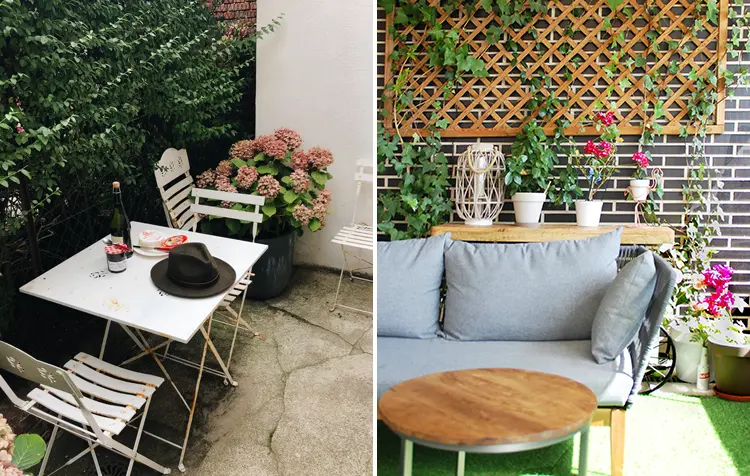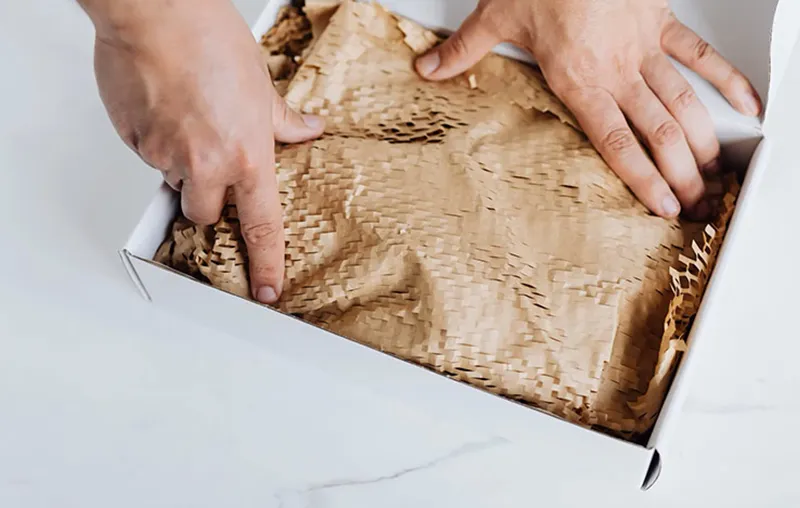You want to make your terrace sustainable? Then you've come to the right place! A terrace is the stylish, low-maintenance and inviting link between your own four walls and the green garden. It protects from wind and weather and can usually be used all year round.
But how great would it be if we also designed it to be as environmentally friendly as possible? Whether it's flooring, plants, furniture, privacy screens or lighting, whether it's a tenant:in or an owner:in, whether it's a small veranda, a large terrace or a cloudy roof terrace - there are countless ways to bring nature and terrace into harmony.
In this article I would like to give you the most important tips for a natural and sustainable terrace design. Let's go!
In advance you can find here a short overview of the advice:
- Equip terrace with environmentally friendly flooring
- Prefer patio furniture made from sustainable materials
- Use flower pots in a variety of ways on the terrace
- DIY raised beds to build your own on the terrace
- Put a durable barbecue on the terrace
- Use a natural windbreak and privacy screen for the terrace area
- For a minimalist terrace lighting provide
- Set up a natural green patio cover
- Make the terrace as pet friendly as possible
- Advocate for sustainable behavior on the terrace
1. terrace equipped with environmentally friendly flooring
The material for the floor of a sustainable terrace should be as durable as possible and come from certified sources. Experience has shown that the following are particularly suitable Wood and stone.
If you decide to buy a wooden terrace, you should definitely not to energy-intensive thermo-wood and also not to woods from tropical rainforests (such as acacia, teak, mahogany or wenge). Instead, make sure your decking boards are made from locally grown woods (in Germany, for example, oak, robinia and larch), as well as certified sustainable forestry. Also, paint them with a ecological wood stainwhich guarantees a long service life of your terrace floor.
Natural stone slabs are somewhat more complex to install, but as a rule, they also represent by far the most durable terrace decking. When choosing, be sure to pay attention to the origin of the material and appropriate Fairtrade seal, like XertifiX, IGEP Natural stone or Fair Stone.
2. prefer patio furniture made from sustainable materials.
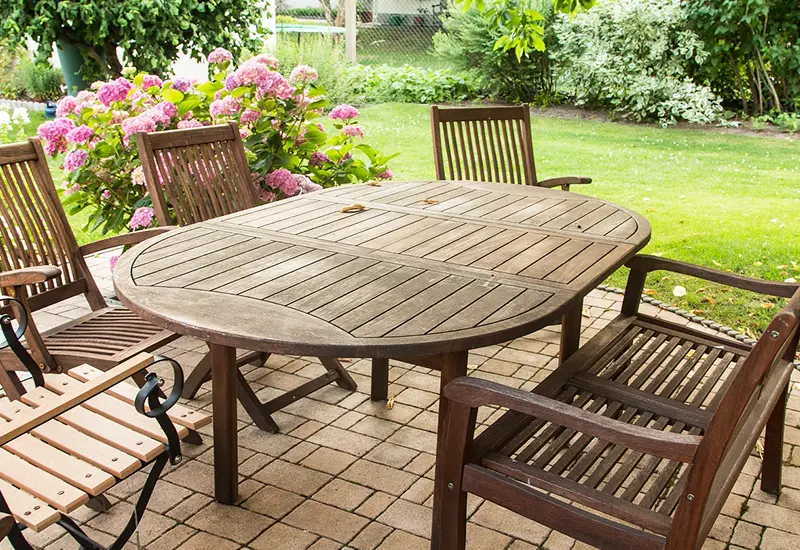
What is true for the wooden floor is also true for your Patio furniture: avoid when purchasing patio table, chairs or the Garden lounger purchasing products of tropical origin wherever possible. High-quality plastic alternatives are a possible alternative.
However, FSC-certified goods, which are made from regional woods, serve as a very sustainable alternative. Just as weatherproof as the popular tropical woods, for example, is Robinia wood.
It is especially sustainable if you choose your furniture for the terrace buy used and upgrade them a bit or even build yourself - For example, from discarded oak planks.
3. use flower pots in a variety of ways on the terrace
Both hanging and standing, you should outfit your sustainable patio with all sorts of plants (especially herbs, fruits, and insect-friendly shrubs) in planters. They are extremely insect friendly, serve as Privacy screen and are also an enriching one, decorative element.
Herbs
Many Types of herbs look wonderful, smell good, attract insects and also expand your culinary offer in the climate friendly cuisine. Here are some herbs that are particularly suitable for growing on the terrace:
- Chives
- Rosemary
- Basil
- Cress
- Thyme
- Oregano
- Parsley
- Lemon balm
- …
Book Tip: If you're craving more knowledge and appropriate recipes for climate-friendly cooking, I can recommend our Book "Kochen fürs Klima" to the heart.
Fruits
With some Fruits you can expand the range in an animal-friendly way and create your own little "snack terrace". For example, the following fruits can be grown and enjoyed in flower pots:
- Apple
- Strawberries
- Pear
- Gooseberry
- Raspberries
- Blueberries
- …
Insect friendly potted plants
Whether in a window box or in a pot, you'll be doing bees and countless other insects around your eco-friendly patio an extremely big favor with the following plants:
- Daisies
- Savory
- Lavender
- Sunflowers
- Peppermint
- Thyme
- Sage
- …
4. build DIY raised beds for self-growing on the terrace
In addition to the hanging and standing flower pots, you can also directly create a somewhat larger raised bed, which, for example, closes off one side of your terrace. It is quite uncomplicated to build from environmentally friendly, regional woods or even upcycle from old euro pallets.
Depending on what plants you grow in it, your raised bed will then serve as a Food source and insect-friendly, effective privacy screen. Fittingly I can offer you the Book Permaculture for self-supporters recommend by really learning everything you need to know to grow your own from the terrace or in the garden.
Tip: You can find detailed tips on this in the separate blog article about the Urban Gardening. Vertical farming", which is becoming increasingly popular, can also be a sensible alternative for greening your own terrace.
5. place a durable barbecue on the terrace
There is hardly anything more sociable than barbecuing together on the terrace. Of course, you should do without a waste-producing disposable grill! But whether charcoal, gas or electric grill makes little difference from an ecological point of view, according to TÜV Rheinland₁. Just make sure it is as durable as possible and support the Longest possible service life by a suitable cover.
In terms of sustainability, however, what you put on the grill is much more crucial. To produce one kilogram of meat, for example, more than 15,000 liters of water are used. In addition, the Factory farming The use of the oil and gas industry is largely responsible for the deforestation of the rainforests. In addition to the animal suffering, there is also the enormous climate impact. Trials therefore, to avoid grilled food of animal origin as far as possible.
For your next patio barbecue, prefer instead prefer purely vegetable alternatives. Even with a vegan diet today no one has to go without Steaks, sausages or grilled cheese do without. In addition, countless types of vegetables can also be wonderfully prepared in a grill tray.
Tip: For more inspiration on eco-friendly grilling, check out the article on vegan barbecue.
6. use a natural windbreak and privacy screen for the terrace area.
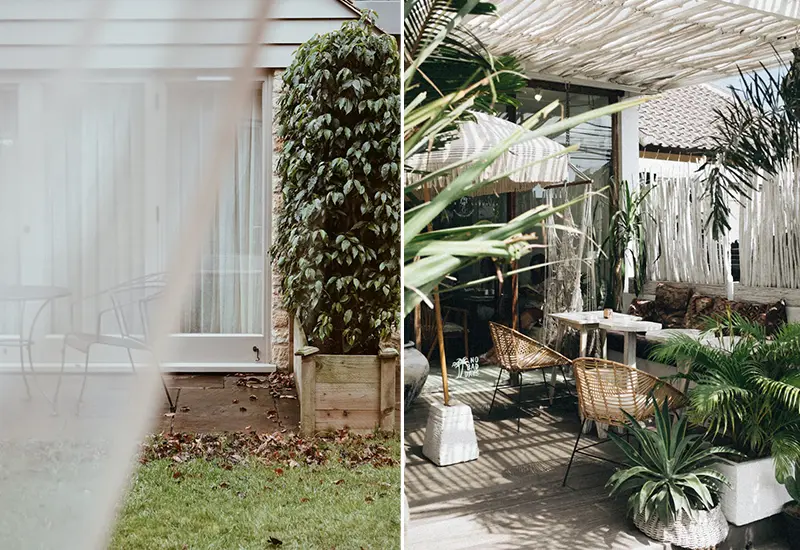
Also, a sustainable terrace should, of course, take into account the Privacy of the residents - and at the same time also as a Windbreak serve.
In addition to small potted plants, raised beds, piles of wood, overgrown Stone walls and Privacy fences from the hardware store or large trees, hedges and bushesFor these purposes, you can also use the following, sustainable alternatives ready
- Wattle fences (e.g. from willow rods)
- Trellis fruit (e.g. Pear, apple or sour cherry)
- Perennials (e.g., watercress, giant scalehead, or perennial sunflower).
- Grasses (e.g., bamboo, pipe grass, or pole cane).
- …
Above all, the plant privacy screen is particularly sustainable, because it both you, as well as countless garden animals. Food provides. In addition, it serves many animals as Shelter.
Tip: I have told you about the sustainable garden privacy screen has written a separate, more detailed article. Feel free to take a look!
7. provide minimalist terrace lighting
Hanging, on the house wall, on the ground or on the roofing of your terrace, you can set stylish accents and provide more safety with the right light elements. However, from a sustainability point of view, you should ensure that it is a Warm lighting acts, which is deliberately used only where - and only then shines, when it is really needed.
It is necessary to solve the environmental problem of Light pollution (i.e., the brightening of the night sky by artificial light) as much as possible. Above all, bright, permanent light not only costs electricity, but also irritates countless animal species. Especially nocturnal insects orientate themselves in the darkness by the comparably weak light of the stars.
Ideally, you should use LED lamps, ideally with Motion detector. Also Solar lamps are a more environmentally friendly alternative. I can recommend a solar canning jar. But also tea lights in DIY wooden trunks, for example, serve as an original, decorative source of light on your own terrace.
8. set up a natural green patio cover
Of course, classic awnings, patio umbrellas and tents, add-on pavilions, free-standing patio canopies and also modern awnings serve as rain or sun protection. But a particularly lasting charm has above all one Pergola, which can be overgrown by climbing plants and is generally open at the top.
This way you can naturally shade your terrace - and the overgrown pergola also serves as a privacy screen. Ideal are especially Vines. But also Ivy, blue ivy, the evergreen honeysuckle, roses or Trumpet flowers can visually close the terrace roof quite quickly and make it a real eye-catcher.
9. make the terrace as pet friendly as possible
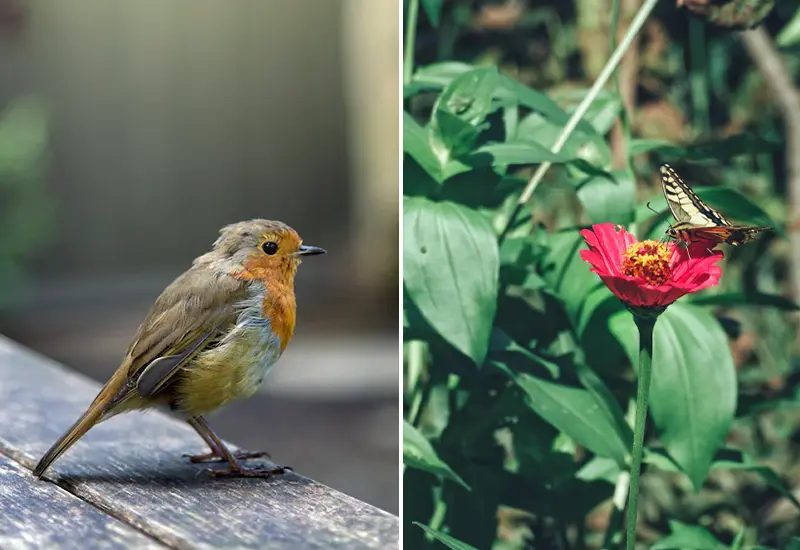
A sustainable patio is a vibrant patio that will not only delight you and your family, but also wildlife! For example, with simple means already ensure that birds and insects Food and shelter find
Here are some ideas and tips on how to do it:
- Install insect hotel (build it yourself or buy here*)
- Water plants regularly (among other things for more biodiversity)
- Provide bird bath, sand bath and tit balls
- Keep wasps away naturally (e.g. with coffee powder or spray bottle).
- Prefer bee friendly plants (e.g. thyme, basil or lavender)
- …
Can you think of any other tips for pet-friendly patio design? Then feel free to drop me a comment with your ideas!
10. advocate sustainable behavior on the terrace.
Now we've talked at length about what you can do so for a truly sustainable patio. But there are also three things you better not dowhich I would like to explain to you briefly here:
- Do not use patio heaters: Whether gas-powered or electric Unfortunately, radiant heaters are not only expensivebut also very harmful to the climate. They may provide a certain warmth in the short term, but on closer inspection they are an absolute waste of energy.
- Do not use a leaf blower: Leaf blowers and vacuums are not sustainable, but noisy, odorous, pollute the soil. In addition, they scare the wildlife.
- Do not clean your terrace with chemicals: Both a wooden terrace and a stone terrace can be cleaned naturally without the use of chemicals.
What you can do instead? Dress a little thicker during the colder months - and sweep your patio with a commercially available Broom off! You can get rid of resistant green coatings with a grout scraper, soft soap, vinegar essence, vinegar cleaner, water, a scrubbing brush and, if necessary, with a high-pressure cleaner.
All this also works on a gentle, natural way.
Your sustainable terrace in harmony with nature
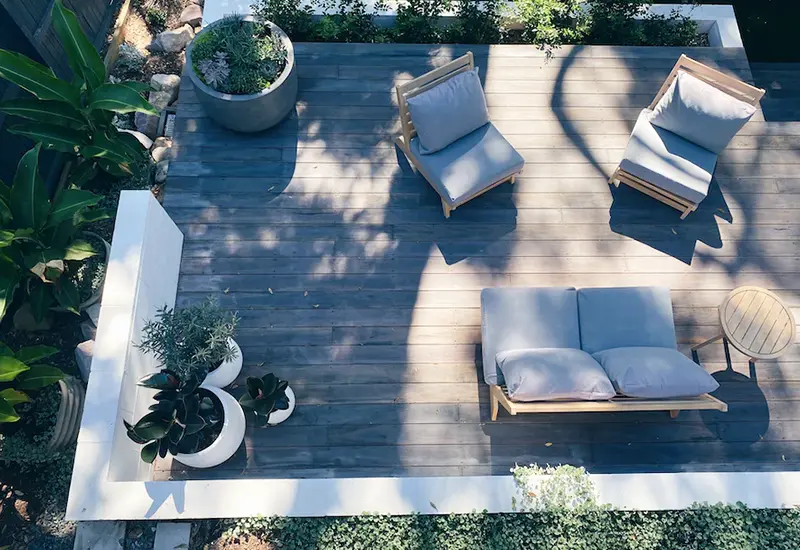
A patio is so extremely versatile! It can create privacy, allow for unique barbecues, be stylishly staged, as well as provide a food supply for you and other garden inhabitants. What's wrong with making it as environmentally friendly as possible?
In this blog article you have learned the most important tips for a sustainable terrace. Whether it's a roof terrace, roof garden, veranda or ground-level outdoor area - implement the advice in a relaxed manner - little by little. Then it will be all the more fun! Enjoy the moments on your terrace and watch the hustle and bustle - over time, you'll come up with many more ideas to make it even more environmentally friendly.
Do you have any questions, further tips or your own experiences with the most environmentally friendly patio design you would like to share? Then I'm really looking forward to your comment!
Stay sustainable,

PS.: How you have your design the entire garden as sustainably as possibleYou'll find out now in the next blog article. Have fun!
References:
₁ TÜV Rheinland: Ökobilanz von TÜV Rheinland: Rund 20 Prozent weniger klimaschädigen Emissionen durch bewussten Einkauf des Grillguts (22.06.2015), available at https://www.pressebox.de/pressemitteilung/tuev-rheinland/Oekobilanz-von-TUeV-Rheinland-Rund-20-Prozent-weniger-klimaschaedliche-Emissionen-durch-bewussten-Einkauf-des-Grillguts/boxid/743819 [11.01.2023].

